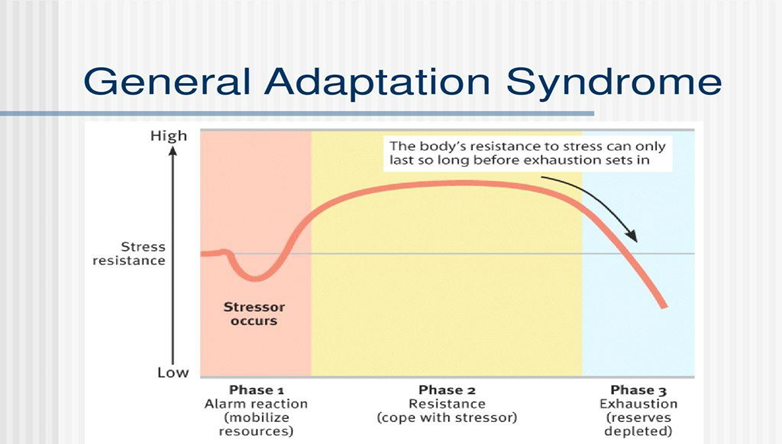Which of the following are physiologic manifestations which occur in the alarm stage of the General Adaptation Syndrome? (SELECT ALL THAT APPLY)
decreased blood glucose
Increased mental acuity
Increased urine retention
increased bronchial dilation
decreased pupil size
Correct Answer : B,C,D
B. Increased mental acuity, or heightened alertness and cognitive function, is a characteristic response during the alarm stage of GAS. The body's stress response enhances mental focus and perception to help the individual recognize and respond to the stressor effectively.
C. During the alarm stage of GAS, the sympathetic nervous system is activated, leading to the release of adrenaline (epinephrine) and norepinephrine. These hormones stimulate the kidneys to conserve water and sodium, leading to decreased urine output and increased urine retention. Therefore, increased urine retention is an expected physiologic manifestation in the alarm stage.
D. During the alarm stage, the sympathetic nervous system activation leads to bronchodilation, allowing for increased airflow to the lungs. This facilitates improved oxygenation of the blood and enhances the individual's ability to respond to the stressor by increasing oxygen delivery to tissues.
A. During the alarm stage of GAS, the body initiates the fight-or-flight response, which leads to the release of stress hormones such as cortisol and adrenaline. These hormones increase blood glucose levels through processes like glycogenolysis and gluconeogenesis to provide energy for the body to respond to the stressor. Therefore, decreased blood glucose is not an expected manifestation in the alarm stage.
E. Decreased pupil size: During the alarm stage of GAS, the sympathetic nervous system is activated, leading to the dilation of pupils (mydriasis). This allows for improved visual acuity and peripheral vision, enhancing the individual's ability to detect potential threats or stimuli in the environment.

Nursing Test Bank
Naxlex Comprehensive Predictor Exams
Related Questions
Correct Answer is B
Explanation
B. Elevating the head of the bed to 30-45 degrees is the recommended position for administering enteral feeding to reduce the risk of aspiration. This semi-upright position helps promote gastric emptying and reduces the likelihood of reflux or regurgitation of the feed into the lungs. It also allows for better tolerance of the feeding and minimizes the risk of complications.
A. Positioning the client on the left side with the knees bent is not typically recommended for enteral feeding. This position may increase the risk of aspiration, especially if the client has impaired swallowing or if there are issues with gastric emptying. It may also not be the most comfortable or practical position for administering enteral feeding.
C. Positioning the client on the right side with a pillow behind the back is not a standard practice for administering enteral feeding. This position may not provide optimal access for administering the feed, and it does not offer the benefits of head elevation to reduce the risk of aspiration.
D. Elevating the head of the bed to only 15 degrees may not provide sufficient upright positioning to reduce the risk of aspiration during enteral feeding. While it is better than lying completely flat, a higher degree of elevation (30-45 degrees) is generally recommended for optimal safety and effectiveness of enteral feeding.
Correct Answer is B
Explanation
B. This client's excitement to learn about a new prosthesis indicates a positive attitude towards rehabilitation and a willingness to engage in the learning process. Their enthusiasm suggests a high level of motivation to adapt to their new prosthesis and incorporate it into their daily life. Therefore, this client exhibits a high motivation to learn.
A. This client's struggle with following nursing directives regarding discharge goals suggests a lack of motivation or difficulty engaging in the rehabilitation process. They may be experiencing challenges or barriers that are impeding their progress. Therefore, they do not exhibit the highest motivation to learn at this time.
C. While this client may have valuable experience and insights to share with newcomers, being a "coach" does not necessarily indicate a high motivation to learn for themselves. While they may be motivated to help others, it doesn't necessarily reflect their own eagerness to engage in learning activities for their own rehabilitation goals.
D. This client's eagerness to be discharged may suggest a desire to move on from the rehabilitation facility rather than a motivation to engage in learning activities related to their rehabilitation. They may be more focused on the end goal of leaving the facility rather than actively participating in the rehabilitation process.
Whether you are a student looking to ace your exams or a practicing nurse seeking to enhance your expertise , our nursing education contents will empower you with the confidence and competence to make a difference in the lives of patients and become a respected leader in the healthcare field.
Visit Naxlex, invest in your future and unlock endless possibilities with our unparalleled nursing education contents today
Report Wrong Answer on the Current Question
Do you disagree with the answer? If yes, what is your expected answer? Explain.
Kindly be descriptive with the issue you are facing.
